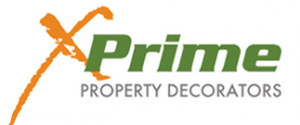Wallpaper stripping
If you are considering doing the wallpaper removal yourself, talk to us first. In many cases some advice by our Xprime specialist in the early stages will save you considerable costs not to mention many weekends of wallpaper stripping only.
The persistent layers in some area can be left in place if they are too hard to be removed. As long as they are firmly stuck on the surface, they will be stable enough to plaster over provided that the correct preparation procedures are followed.
Skimming walls:
The skimming process provides a smooth surface in terms of texture. It does not create straight walls (even relining may not rectify framing deviations). If there is a specific curve that is very visible due to its shape or its proximity to a straight object, it can be smoothed out till the appearance is minimized. Skimming work is very time consuming. A stopper would spend 3 to 4 times as long to skim a given wall as he would take to stop the same wall from new. Even a small wall skimming job requires multiple visits.
a) Preparing existing walls or ceiling for the skimming coats
After a light sand to remove any debris your specialist will apply a high quality oil based pigmented sealer (OBPS). This special sealer is designed to bond and stabilize the plasterboard in all old adhesives and preventing substances from leaching through and reacting once the skim coats have been applied.
OBPS contains modified oils and is quite odorous during its application. We do not recommend using the affected rooms during this process.
b) Steel slimlines to external corners
Our Gib stopper will fit steel slimlines to any external corners (corners protruding into the room) these are designed to give a square profile rather than a rounded corner look or the old fashioned timber corner bead look.
c) Re-enforcing the joins to prevent cracking
To protect the plastered surface long term from cracking our specialist use only paper based perforated re-enforcing tape. This is applied using high adhesive plasters to ensure a strong bond.
d) Paper tape to redefine and re-enforce internal corners
We may recommend paper re-enforcing tape to create a defined line in internal corners. This strengthens corners and improves the visual appeal of the room. Where plasterboard or framing is significantly out of line we may also straighten the line to minimise the appearance of such a defect.
e) Wall skimming
First coats are also applied using high adhesive compound. Such compounds are stronger and harder, and are applied to the surface to fill any scratches or tears in the paper or nail-holes.
The second skim coats may be in an air drying compound and should cover the entire surface.
The sanding process includes light checks with a 500w halogen floodlight. This is designed to identify areas that do not meet our quality criteria.
Gib stopping:
a) Steel slimlines to external corners
b) Paper tape to re-enforce internal corners and all gib joints.
c) Apply plaster compound:
First coats are also applied using high adhesive compound. Such compounds are stronger and harder.
The second coat is applied to the surface and any scratches or tears in the paper or nail-holes.
The final skim coats may be in an air drying compound and should cover the entire surface.
d) Sanding process includes light checks with a 500w halogen floodlight.
What you need to do before we come:
XPrime tradesmen aim to complete the job efficiently, safely and will try all means to prevent damages to your belongings. In order to assist us to achieve our goal, we will need you to clear various areas before XPrime specialists start working on your site:
a) Remove electronic equipment out of the rooms to prevent dust damage.
b) Remove ornaments, wall hangings and small items out of the room.
c) Large furniture may stay provided they are placed in the center of the room.
d) Cover furniture with sheets to prevent dust settling on them.
e) Provide access to the entire area at one time, as breaking the job into smaller sections increases the total man hours taken to complete the job.


